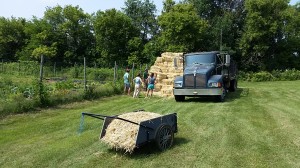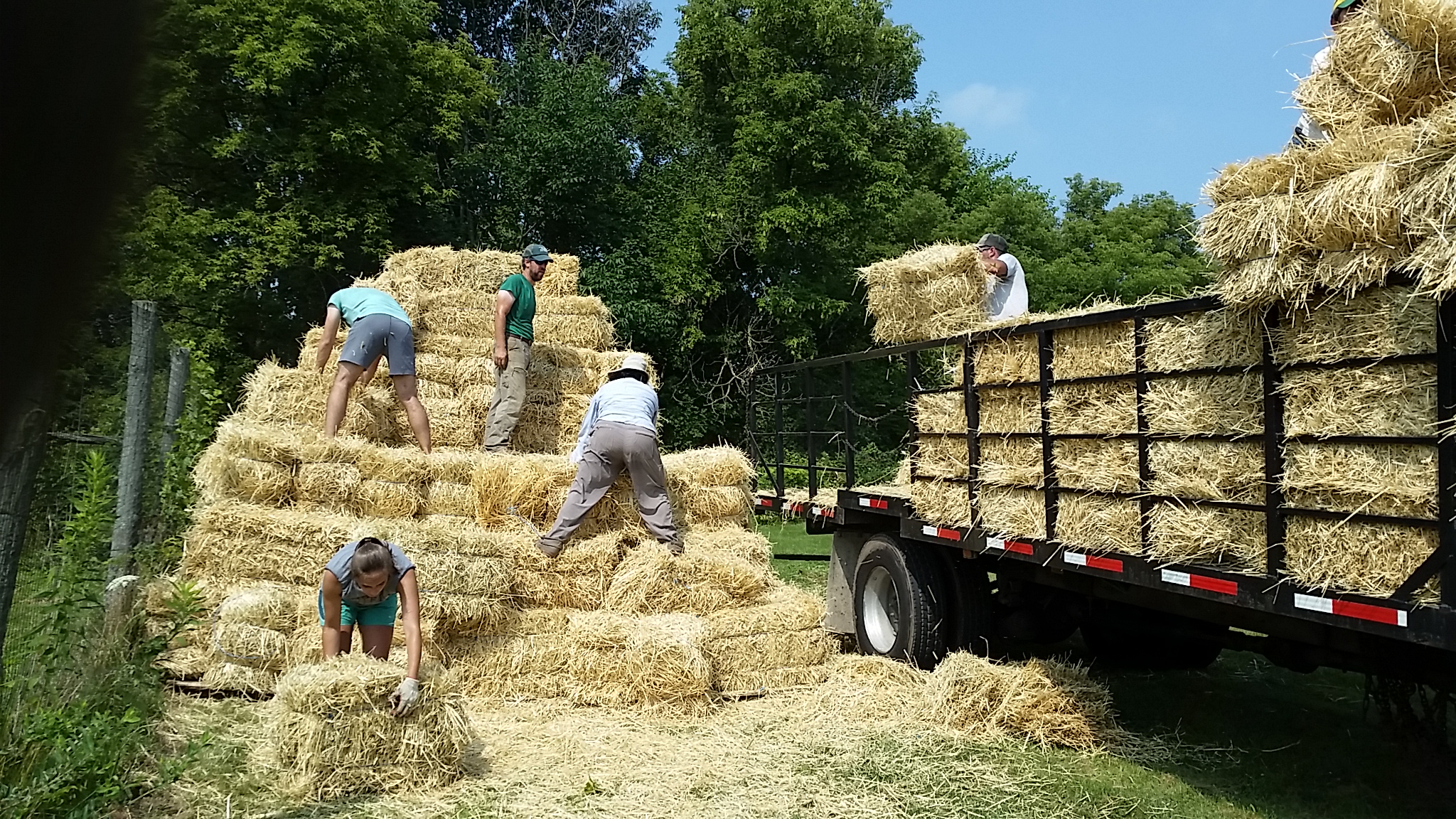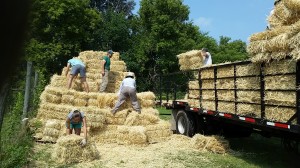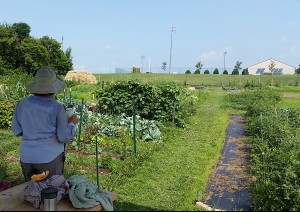So this isn’t very much like the other technique posts, but it’s closer to them than a general update. This post is about something that became very relevant to the farm this week. As you may have guessed from the title, this post is about straw.
We got a bit of a shipment of straw this week. A shipment of about 400 bales. That may seem like a lot, but apparently it’s not so much, as exampled by the shipment Prof. John Wilson was getting after ours, for 1000 bales.
Now let’s back up a bit. What is straw exactly?
Well, when most people see straw, they say hay. But there is a difference. Hay is for horses as they say, and it’s still got seed husks as opposed to straw which is made to be easier to lay down and has the seed husks removed.

The LaFarm crew stands victorious after stacking 400 bales of straw. Despite the intimidating nature of moving 400 15+ lb blocks of sharp sticks, we finished the job in only 45 minutes!
So what are we going to do with 400 blocks of straw? Mulch! Mulching 6-8 inches of straw around a growing plant or on paths between plants is a great way to stop weeds (as long as you go ahead and weed or mow the area beforehand.) And around the time when student labor is getting harder to come by as summer break is nearing its end, having this protection against weeds is very necessary for our farm.
Straw is a really great mulch because it also adds a good deal of organic matter to the soil if you till it in at the beginning of next season, unlike plastic mulches. We’re really going to enjoy using it here at the farm, though it was hard work getting stacked up.
Straw could easily be the answer to your weed problem wherever you are, although you might need less than 400 bales (or maybe you need hundreds more!) But if you’re handling it, try to wear gloves and long sleeves, as it can be very irritating on the skin. It usually comes in large blocks called bales tied with 2 lengths of twine. When you have it where you want it, cut the twine and just flake it out underneath your plants or around your pathways until its layered 6-8 inches down.
And if a length of twine comes off before you get the bale where you need, don’t panic! You can take the twine that fell, cut it, and cross-tie it around the other piece, by taking it around the narrower edge and tying it to the other piece on each end.
Good luck with your weeds!
-Joe Ingrao, Excel Scholar Summer 2014


